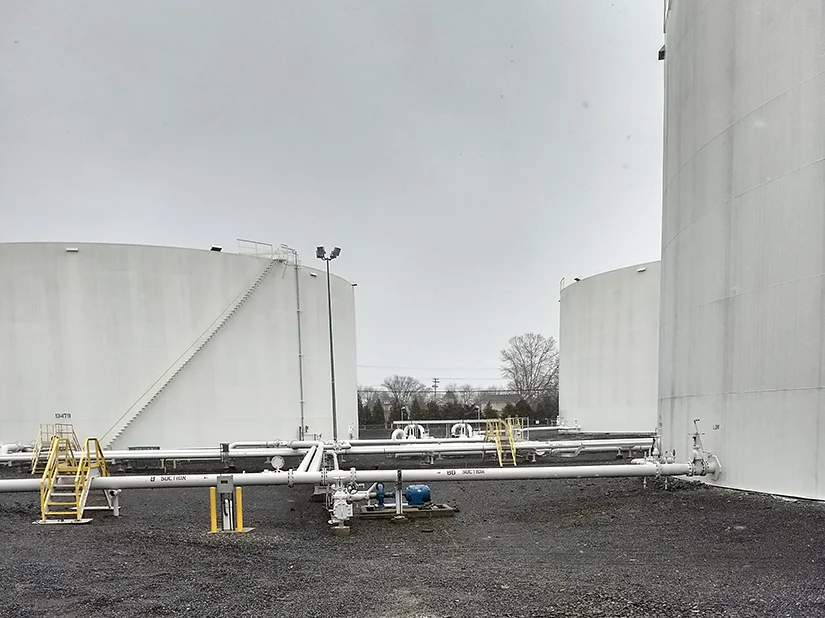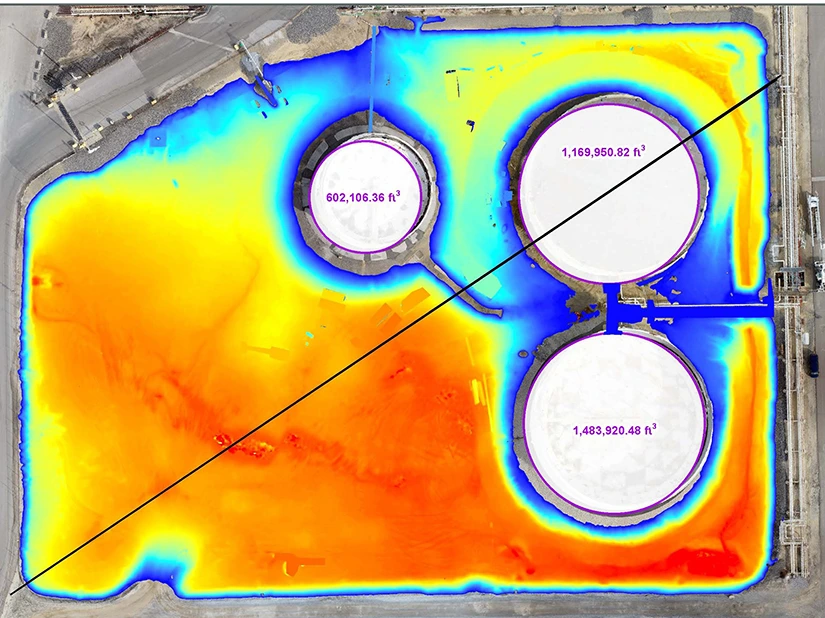Drone Observations for Tank Farm Inspections
GES was hired by a large petroleum-refining company to demonstrate the use of drones for inspecting aboveground storage tanks (ASTs), aiming to improve safety, data quality, and efficiency. The project involved using a drone equipped with advanced sensors, including thermal infrared and optical zoom cameras, to inspect tanks for damage and collect data for updating the client's Spill Prevention Countermeasure and Control (SPCC) plan. GES utilized photogrammetry, which combines hundreds of high-resolution images to create accurate orthomosaic maps and 3D models. This method, along with ground control points and GIS analysis, allowed for the precise calculation of secondary containment volume and provided a safer alternative to workers performing inspections at dangerous heights. The drone-based approach not only mitigated risk but also offered significant time and cost savings, provided a more detailed inspection of tank conditions for future comparisons, and helped the client maintain regulatory compliance.

